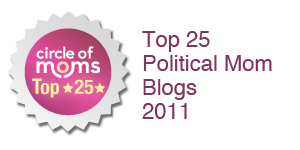Janice Lynch Schuster, Senior Writer and expert in end-of- life issues at the Altarum Institute, delivered this speech at the NOW Annual Convenvtion on June 30, 2012. It appears here in full with her permission.
When I was 10, in the early 1970s, I wanted to be an altar girl. The parish priest actually said I could not: because I was a girl. My mother and sisters and I learned then how important the women’s movement was to open doors that were closed to us.
A few years ago, I had my young son at his pediatrician’s office-a woman. Then I took him to the dentist, also a woman. That night, as he went to sleep, he asked, “Can boys grow up to be dentists and doctors?” What a long, long way we have come…baby!
NOW led the way, opening doors, giving us opportunities, helping us to see ourselves as capable girls and women. Even more, it gave us a voice to express what we wanted, who we were, and what we needed.
But we have a long way to go. Today, I’d like to talk for a few minutes about the voice of people we don’t hear so much, the voice of frail elders and their family caregivers.
Late last year, my father was ill: the lingering effects of cancer treatment landed him in the hospital. My family rallied to be at his side, making sure that one of us was always present during his hospital stay. As a writer, I can work anywhere, so I sat by his bed, fielding emails and writing assignments from my office.
I actually enjoyed one afternoon when Dad and I sat with my laptop, watching Bruce Springsteen videos from shows we’d seen over the years. Dad tapped his foot and sang. I couldn’t stay—I was due at my son’s elementary school, where I was to be the guest reader.
As I rang the school’s door bell, I was struck by a realization: I AM one of the statistics about whom I write: Overnight, it seemed, I’d joined the sandwich generation, that group of men and women who do double-time, caring for aging parents and for their own children, young and old.
I was flabbergasted. For 15 years, I’ve WRITTEN about aging, caregiving and the end of life. I’ve WRITTEN about the millions of aging Boomers, and the havoc we are about to wreak on the health care system. I’ve DESCRIBED our aged parents, and the journeys they will face. But until that afternoon, ringing the school doorbell, I had never counted myself among them.
Soon, we will all, one way or another, count ourselves among them. As former First Lady Rosalyn Carter has said, “There are only four kinds of people in the world – those who have been caregivers, those who are currently caregivers, those who will be caregivers and those who will need caregivers.”
The experience will become nearly universal. Every day, 10,000 Boomers turn 65—a flood that will continue for the next 18 years.
And it will mostly be women who find ourselves as caregivers and care recipients. We outlive men—indeed, those of us who become widows will be widowed for an average of 7 years before we die. We often do not have the family caregivers we need. We are 50 percent more likely than men to need nursing home care, and we will spend 50 percent more time there than men.
Fortunately, or unfortunately, Boomers will live longer and grow sicker, frailer, and older than any other generation in history. I say unfortunately, because Boomers gave birth to and raised fewer children than our parents did, and so we will have fewer people to rely on as caregivers.
We are already a nation of family caregivers. Right now, at any given time, there are some 42 million family caregivers, people who care for a loved one over the age of 50 who is unable to provide some or all of her own care. There are some 20 million sandwich generation caregivers, who provide 2.4 billion hours of service every year.
AARP gives an amazing statistic in a 2011 report, “Valuing the Invaluable,” which states that the contributions of unpaid caregivers amount to $450 billion dollars a year. If only we could get a fraction of that to pay for lost wages, or the costs of respite care, or retirement security!
Who is the average caregiver? Not surprisingly, it’s a 49-year old working woman who provides about 20 hours of care each week to her mother—and will do so for about 5 years. Rewarding though she might find this unpaid work, she will also find that it taxes her: emotionally, mentally, physically, and financially.
Family caregivers face more stress and bear more physical and financial strains than their counterparts. Caregiving can have costly and negative effects on caregivers’ lives: on their finances, their retirement, their productivity, and especially on their health.
It’s amazing, really, that any of them –of us-are still standing. And yet here we are, millions every day, making life better, easier, or more manageable for the people we love.
And what, exactly, do caregivers do? In a world in which patients are discharged “quicker and sicker,” we do it all, from arranging transportation to and from doctor visits to coordinating hospital discharges. When my father was sent home after various hospitalizations and procedures, it was up to my mother to manage things like wound care and IV infusions. For my squeamish family, these tasks were very difficult. I think my mother deserves a medal, or at least a few continuing medical education credits. Someone in her position might well feel abandoned and isolated—but her experience is not singular, and it is becoming more commonplace. We must come to realize and understand that this is an issue for all of us and our communities. It is especially a women’s issue—it affects us, first, when we are caregivers, and later, when we are care recipients.
It’s not all bad news. We can do a lot to make the work easier. I am a writer for Altarum Institute Center for Elder Care and Advanced Illness. We say our mission is to “make it safe to grow old.” By that, we mean that we want to create the systems, policies, and structures, financial and otherwise, that will enable us to experience comfort, safety, and meaning when we reach late old age.
While we are working to achieve major social changes, we can all do things as individuals. Just as we fought to create better ways to bring babies into this world, we need to find better ways to live for people who are leaving it.
And to do that, we need to insist that things change right now, today, for the people we love.
Four things need to happen. First, aging needs to be seen as a distinct phase in the health care system, with its own priorities, systems, and programs—just like pediatrics and obstetrics deal with special times in our lives by offering coordinated care, we need geriatrics to do the same for aging adults.
Second, we need care plans that are realistic, honest, and shared. We need plans that move across settings, that go with us from place to place and from provider to provider. We need to update these plans. And the plans need to be implemented in a coordinated and effective way.
Third, we need to explore strategies that enable communities—probably cities and counties—to have a hand in managing their services and monitoring their residents’ outcomes. The problems are very local—and so are the solutions.
Finally, we need systems that can manage our care from start to finish. We need organizations to look beyond their own walls, and to see that frail elderly people continue to be their responsibility, no matter where they happen to be.
We only have a short time – within a dozen years, the numbers of old old people will skyrocket. If we don’t have better arrangements to support caregiving, many of them will effectively be abandoned-and we’ll face that fate ourselves when our time comes.
The media and the cognoscenti like to talk about the looming catastrophe of an aging America. I don’t think it’s going to be entirely catastrophic—there is something to be said for having a chance to benefit from the collective wisdom and experience of a generation.
For much of their lives, Boomers have acted like they were the first ones there: the first to go to school or menstruate or give birth or experience menopause. They insisted that the rest of us learn from their experience. This time around, they truly are the first to experience what it will mean to live with so many aged and frail people. It will be up to them—to us—to find ways to shape and define this unprecedented time.
Ringing the elementary school doorbell seemed a lifetime away from ringing the hospital call bell, and yet it is all part of a continuum. I am on it, traveling as best I can. Millions of my sisters are doing the same thing, forging a workable path, often alone. It falls to us now to learn not only how to survive, but thrive. We always have, and I’m sure we’ll do it again. We need to start now—NOW!—we have a very long way to go, and not much time to do it.




Follow Us!